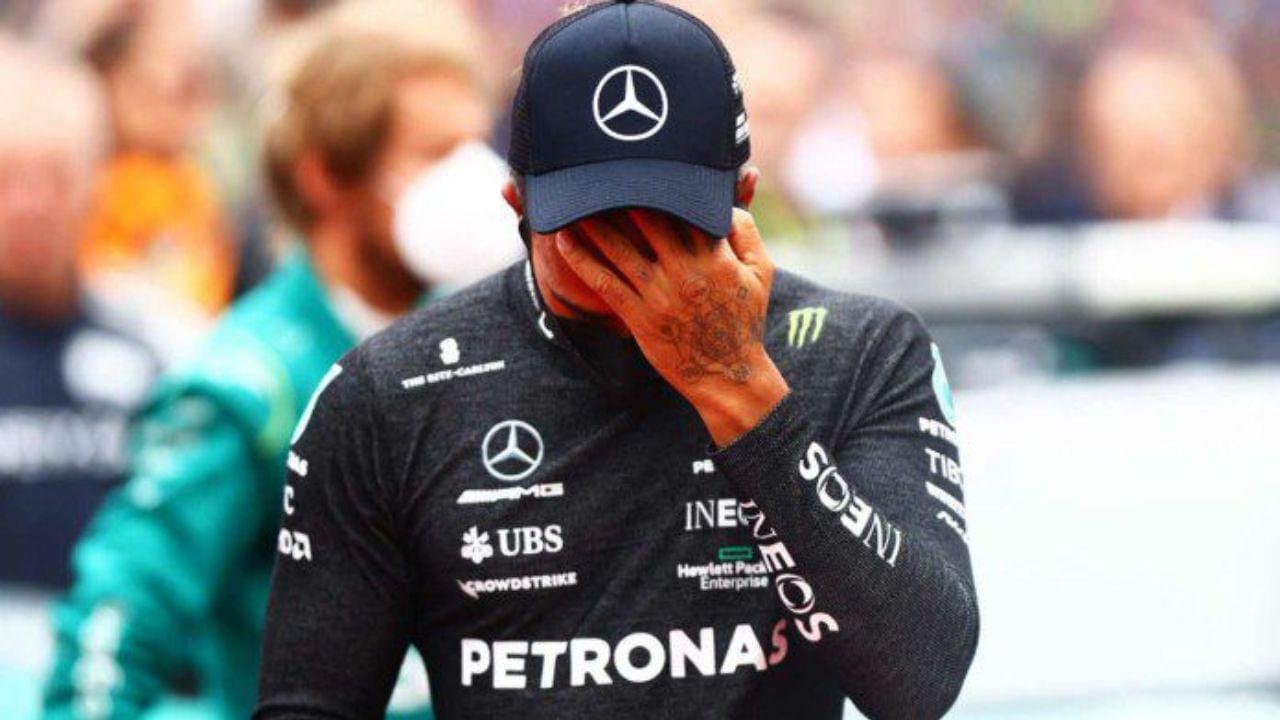Mercedes driver Lewis Hamilton has revealed that he is suffering from a lot more headaches due to the porpoising effects.
Lewis Hamilton is enduring the worst effects of porpoising as the Mercedes’ W13 offers a poor ride quality. While the W13 is considered to be world-class when in the wind tunnel, it isn’t optimising its capabilities on track.
The seven-time world champion revealed that he was suffering forces of 10G over the worst of the bumps in Baku. This caused him severe back pains. He was also spotted facing difficulties getting out of the car after the Azerbaijan GP.
Apart from the back pain, Hamilton said that he is suffering from “a lot more” headaches now. But he is only treating that with painkillers and has not sought specialist advice.
He said: “In terms of micro concussions, I’ve definitely been having a lot more headaches in the past months, but I’ve not seen a specialist about it.
Also Read: Lewis Hamilton opposes Max Verstappen’s comments
“It takes all of the week to recover after a race” – Lewis Hamilton
Initially, it was only the Mercedes drivers and Ferrari’s Carlos Sainz who had complained about the porpoising. But after the Baku weekend, several drivers voiced their concerns.
AlphaTauri’s Pierre Gasly and McLaren’s Daniel Ricciardo both complained about it. While Gasly said, he didn’t want to be using a cane when he was 30, Ricciardo said the “shaking of the brain and the spine” cannot be good for a driver.
#CanadianGP 🇨🇦: Lewis Hamilton: “In the last race and previous races, we have raised the car, and you still have bouncing. Porpoising, it’s more about the flow structure underneath the car – so we run the car very high most season and it’s not until Barcelona that we started
— deni (@fiagirly) June 17, 2022
Furthermore, when asked about the race recovery times in 2022, Hamilton said: “There’s a lot more bruising after the races nowadays so it’s taking you most of the week generally to recover.
“I don’t think that generally has anything to do with age. It’s just because the bruising can be quite severe.”
“When you’re experiencing 10Gs on the bounce on a bump, which is what I experienced in the last race, that’s a heavy, heavy load on the lower part and the top part of your neck.”
Also Read: F1 Twitter reacts as FIA’s technical directive is poised to make things worse for Mercedes







